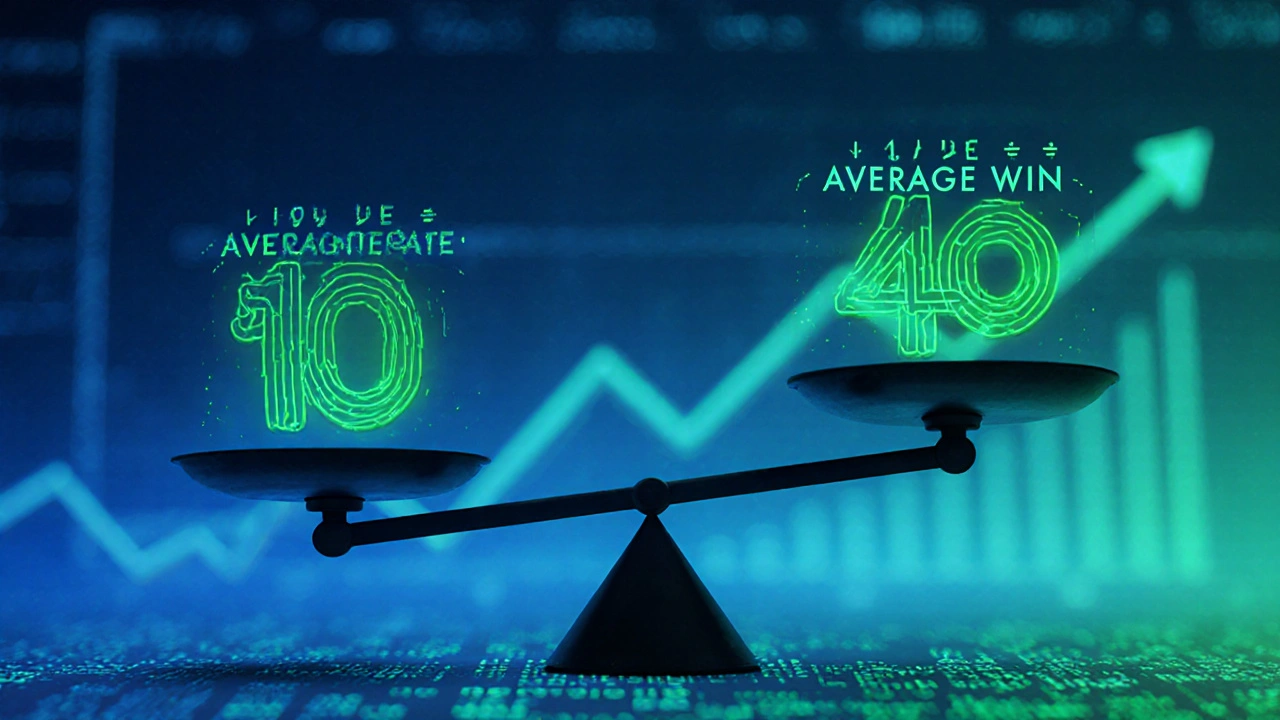Most people think making a fortune in stock trading means getting lucky on a meme stock or catching the next Tesla surge. The truth? The people who build real wealth in the market don’t gamble. They plan. They track. They stick to systems that work, over and over again. If you’re tired of hearing about overnight millionaires who lost it all by January, this is for you.
Forget the hype. Start with the math.
Let’s cut through the noise. A $10,000 account growing to $1 million in five years requires a consistent 38% annual return. That’s not impossible-but it’s not easy either. The S&P 500 averages about 10% a year. Beating that by 3x means you need a clear edge. That edge isn’t insider tips or fancy charts. It’s discipline, risk control, and a repeatable process.
Think of it like running a small business. You wouldn’t open a coffee shop without knowing your cost per cup, your break-even point, or how many customers you need daily. Stock trading is the same. You need to know your win rate, your average gain per trade, and your average loss. A simple formula: Expectancy = (Win Rate × Average Win) - (Loss Rate × Average Loss). If this number is positive, you have a system. If it’s negative, you’re just guessing.
Start small. Scale smart.
You don’t need $50,000 to start. You need $1,000 and a plan. Many traders blow up their first account because they try to make up for lost time by over-leveraging. A $1,000 account with 5:1 leverage is a $5,000 exposure. One bad trade can wipe you out. Instead, trade with 1% risk per trade. That means on a $1,000 account, you risk no more than $10 per trade. If you lose 10 trades in a row, you’re down 10%. You’re still in the game.
Focus on one setup. Not five. Not ten. One. Maybe it’s a breakout above the 20-day moving average with rising volume. Maybe it’s a pullback to the 50-day EMA after a strong trend. Pick one. Backtest it on at least 50 trades. Track every detail: entry, exit, reason for entry, emotional state. Do this for three months. If your expectancy is positive, you have a foundation.
Trade the edge, not the news.
News moves stocks, but it rarely creates sustainable edges. When Elon Musk tweets about Dogecoin, the price spikes. But 90% of people who buy then lose money within days. Why? Because the move is emotional, not structural. The real money is made in predictable patterns: earnings season reversals, institutional accumulation, breakout failures.
For example, look at Apple. In Q3 2024, it beat earnings by 12%. The stock dropped 5% the next day. Why? Because analysts expected 15%. The market priced in perfection. That’s not a failure-it’s a signal. Traders who understood the narrative and sold into the rally made money. You don’t need to predict the future. You need to read what the market already believes-and trade against the crowd when the odds are stacked in your favor.

Master your psychology.
The biggest barrier to making a fortune isn’t lack of knowledge. It’s your brain. Fear makes you exit winners too early. Greed makes you hold losers too long. Overconfidence makes you trade when you’re tired or distracted. Studies from the University of California show that traders who log their emotions improve performance by 27% in six months.
Here’s what works: Before every trade, write down one sentence: “I’m doing this because ______.” If you can’t fill it in with your strategy, don’t trade. After every trade, write: “What did I learn?” Review these notes weekly. You’ll start seeing patterns-not just in the market, but in yourself.
Build a trading journal that actually works.
A journal isn’t a diary. It’s your performance dashboard. Every trade needs at least these fields:
- Date and time
- Stock symbol
- Entry price and reason
- Stop loss and take profit levels
- Position size (% of account)
- Outcome (profit/loss)
- Emotional state (calm, anxious, excited, rushed)
- Lesson learned
Use a simple spreadsheet. No fancy apps. The goal isn’t to look pretty-it’s to spot your mistakes. After 50 trades, you’ll see which setups consistently win. You’ll also see when you’re most likely to blow up: after a big win, when you’re tired, or when you’re trying to recover losses. That’s your edge: knowing when to sit out.
Scale up only when you’re ready.
Once you’ve made 10 consecutive profitable months with a $1,000 account, you can consider scaling. Not because you’re “ready to get rich.” But because you’ve proven you can handle the pressure. Move to a $5,000 account. Keep the same risk rules: 1% per trade. Now you’re risking $50 per trade. Your profits grow, but your stress doesn’t.
At $50,000, you’re earning $500-$1,000 a month on average. That’s not a fortune yet-but it’s a living. At $250,000, you’re making $2,500-$5,000 a month. That’s when trading becomes a real income stream. And at $1 million? You’re not just trading. You’re managing capital. That’s the fortune.

What most people get wrong.
They think the secret is finding the next big stock. It’s not. The secret is consistency. The secret is not letting one loss ruin your week. The secret is not falling in love with a stock because you bought it at $10 and it’s now $15. You don’t need to be right 80% of the time. You just need to make more on your winners than you lose on your losers.
One trader I know made 12 trades in a year. He lost on 7. He won on 5. But his average win was $4,200. His average loss was $800. Net profit? $18,200. He didn’t trade often. He didn’t chase. He waited for his edge. And he walked away when the edge wasn’t there.
Tools you actually need.
You don’t need $10,000 in software. You need:
- A brokerage with low fees and good charting (think TD Ameritrade, Interactive Brokers, or Fidelity)
- A free spreadsheet (Google Sheets or Excel)
- A notebook for your emotional logs
- Access to historical data (Yahoo Finance or TradingView free tier)
Ignore the “AI-powered signals” and “crypto-algo bots.” They’re marketing. The real edge is in your discipline, your journal, and your ability to wait.
It’s not about speed. It’s about patience.
Fortunes aren’t built in 90 days. They’re built over 3-5 years of steady, boring, consistent work. The people who make it aren’t the loudest on YouTube. They’re the ones who didn’t trade last Tuesday because the setup wasn’t there. They’re the ones who didn’t revenge-trade after a loss. They’re the ones who slept through the FOMC announcement because they knew their strategy didn’t rely on it.
Make a fortune in stock trading? Yes. But only if you treat it like a craft, not a lottery ticket.


